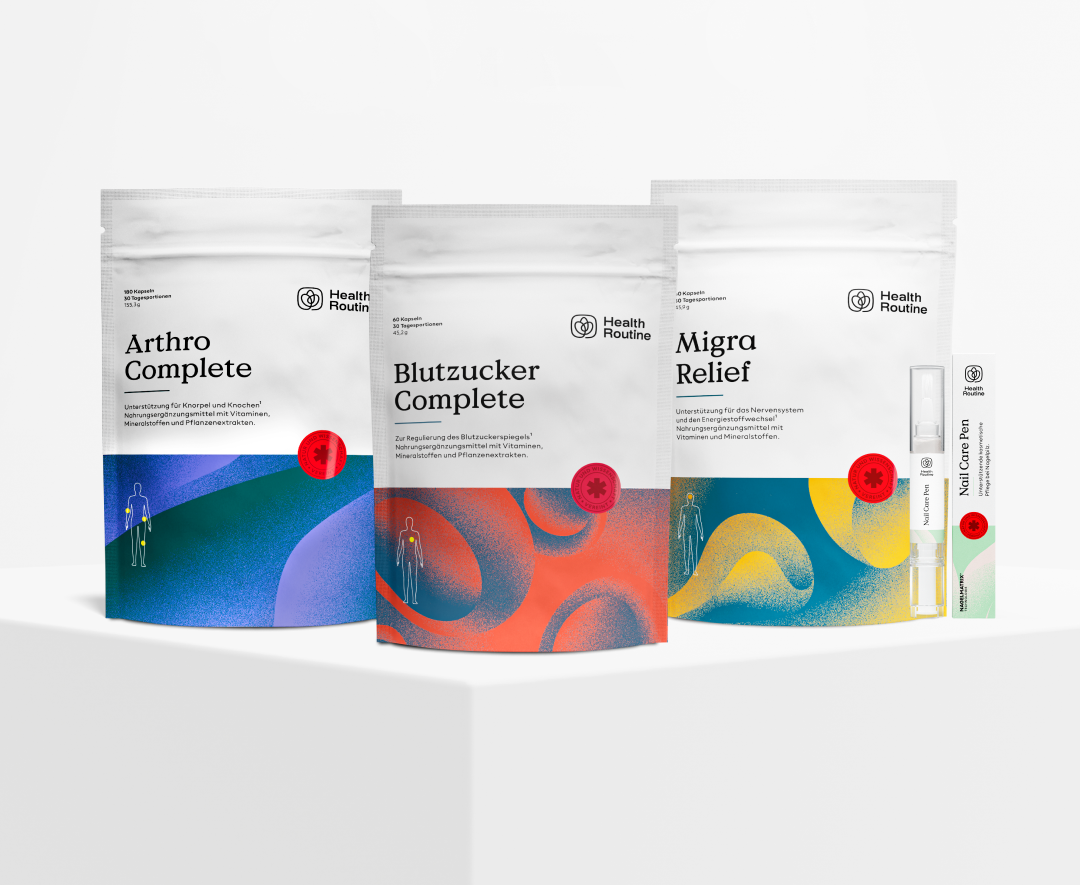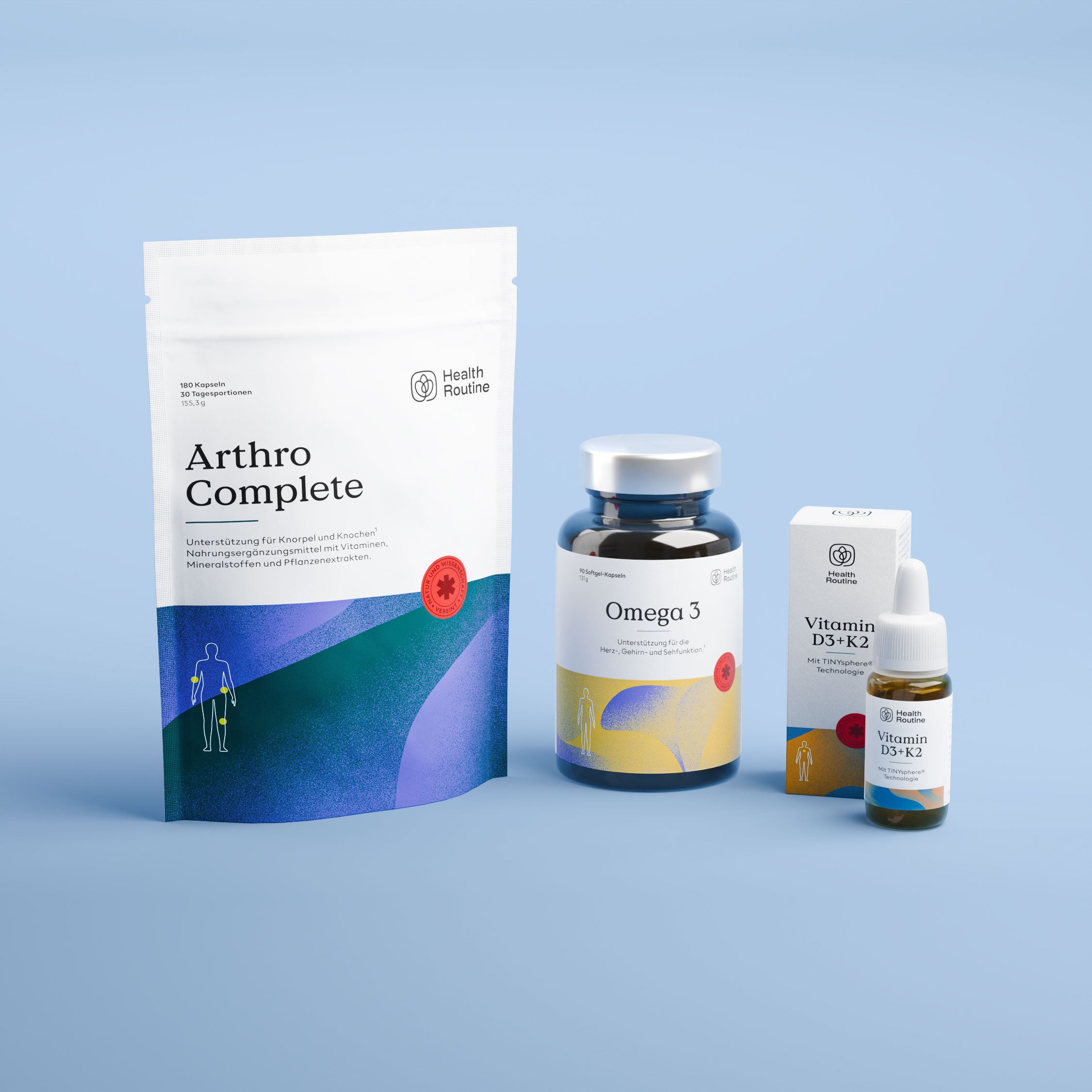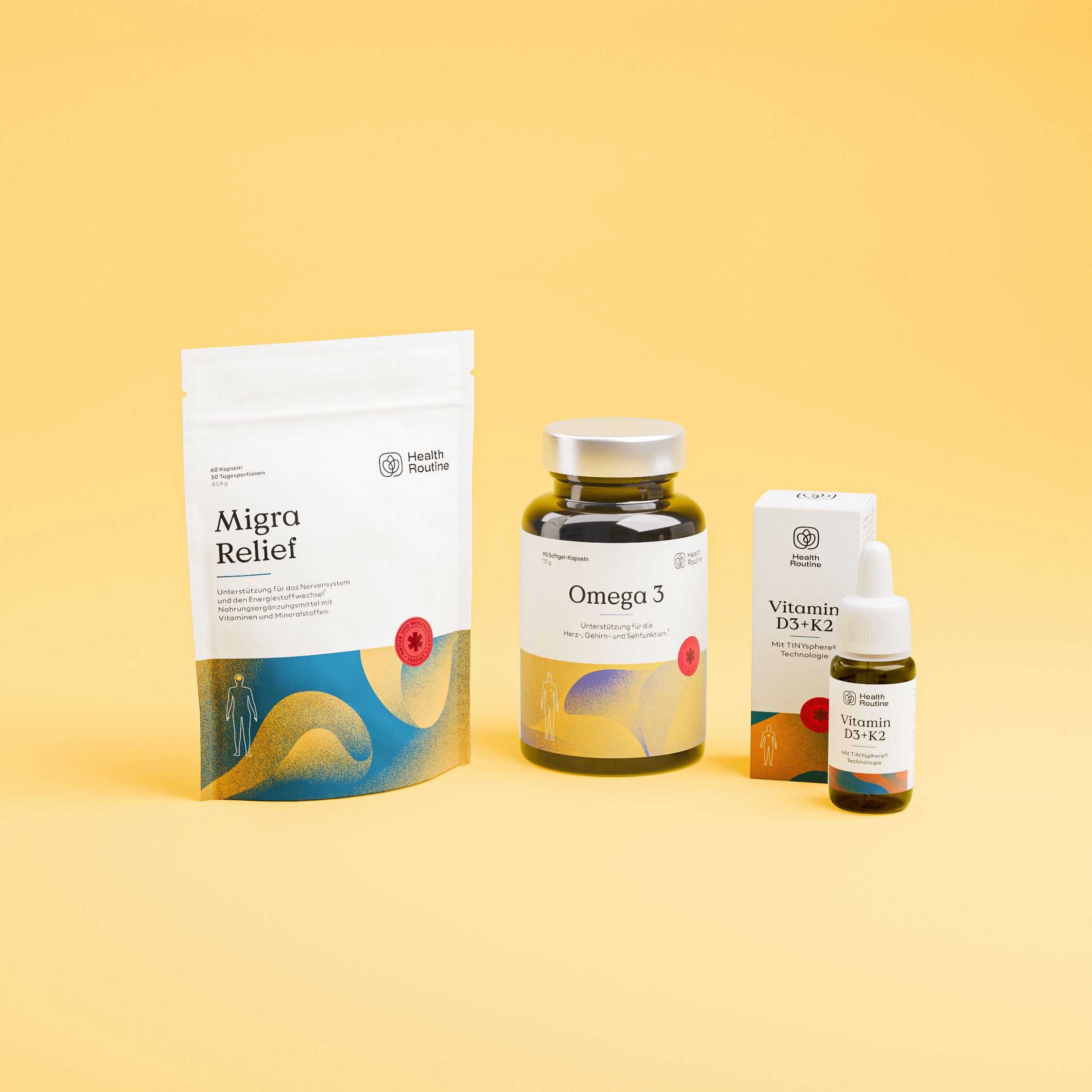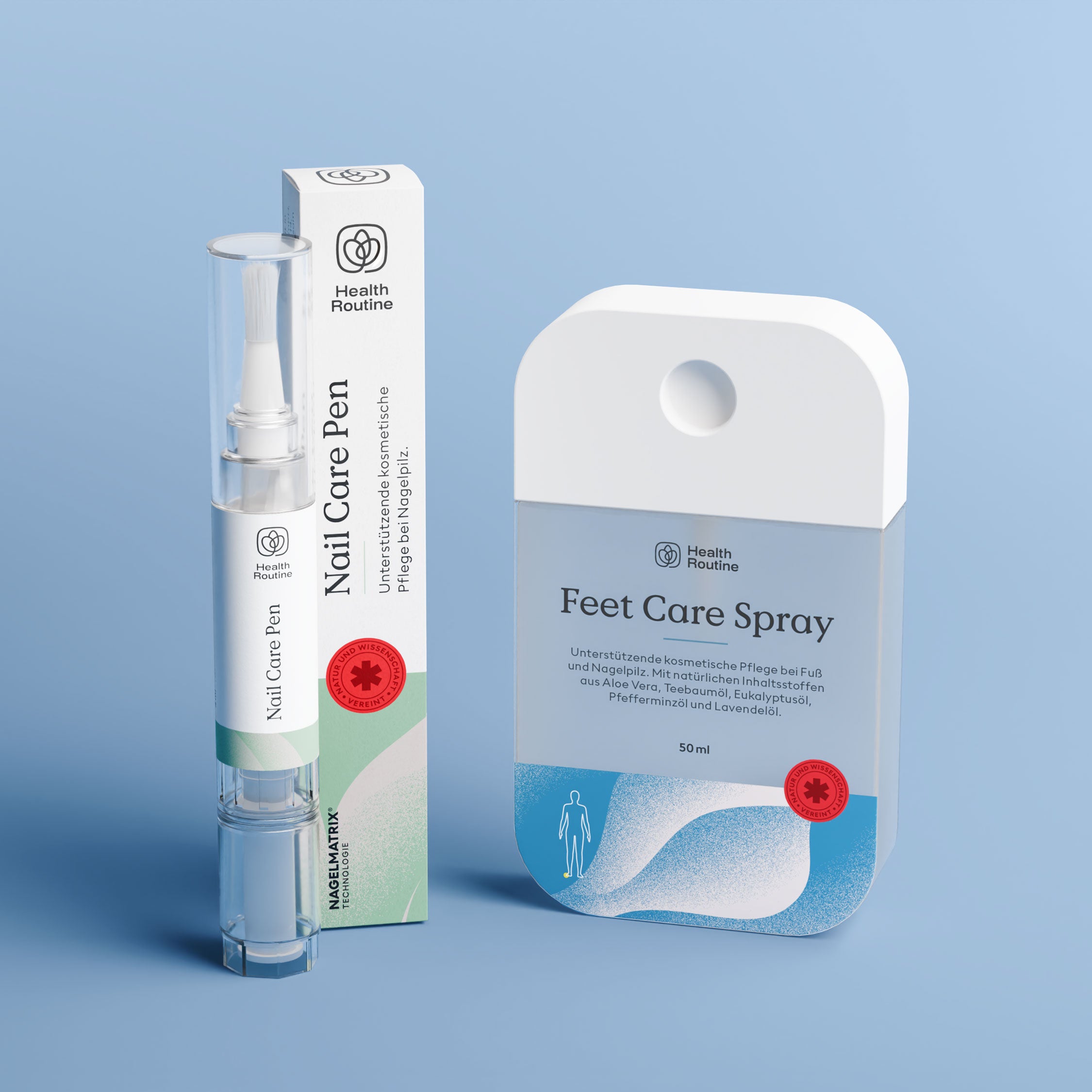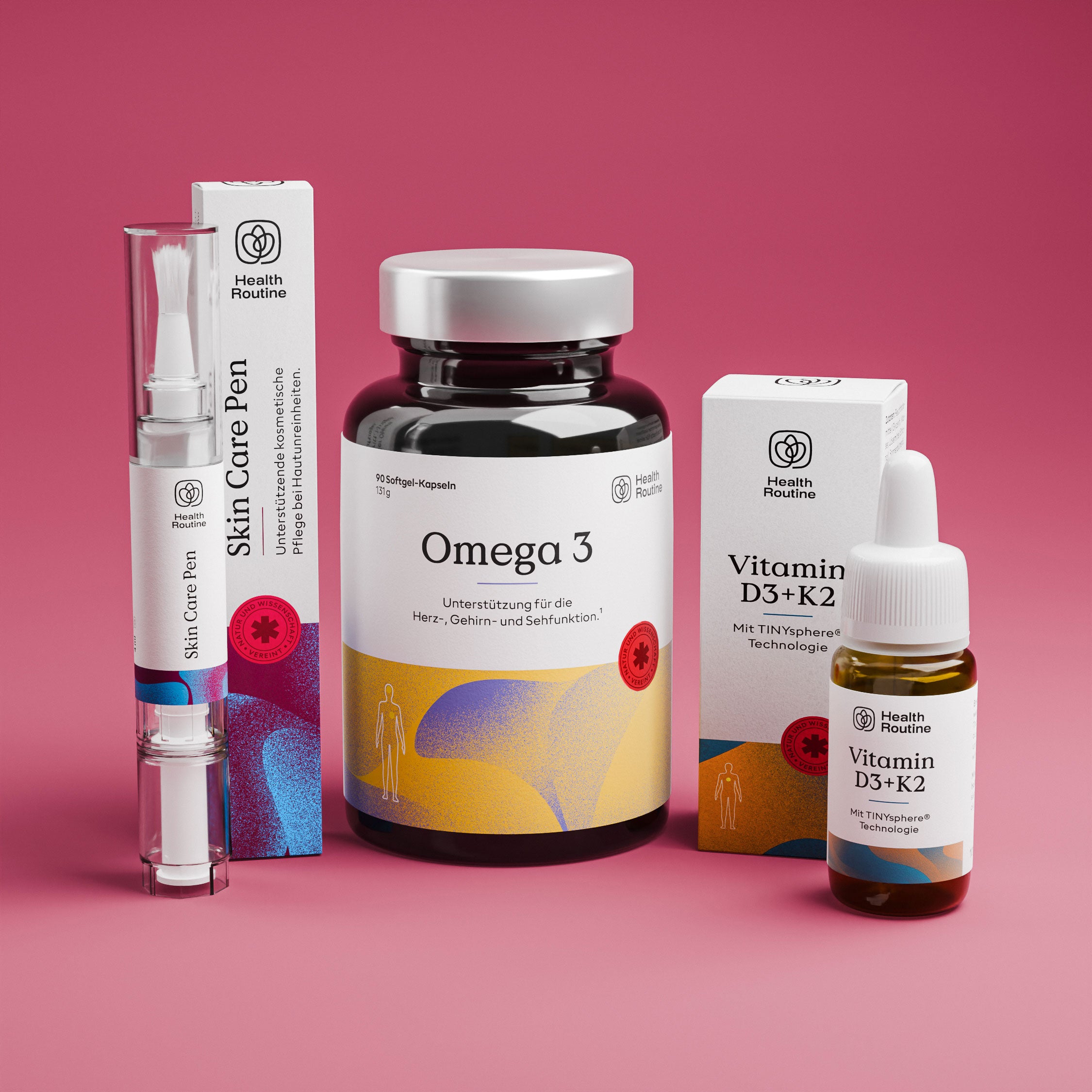The most important things at a glance:
-
Learn the role the nail bed plays in healthy nails.
-
Learn what changes may indicate a damaged nail bed.
-
Discover care tips and information on nail health.
Nail bed – an often overlooked part with an important function
Our nails are more than just an aesthetic feature. They reflect our health and play an important role in our daily lives. A closer look at the nail bed can tell us a lot about our body.
- But what happens if, for example, the nail detaches from the nail bed?
- Or if calluses form under the toenail and cause discomfort when walking?
In this guide, we'll explore the nail bed and its role in nail growth . For example, how can we rebuild the nail bed if it's damaged?
To find out what can be done about the most common nail bed diseases , we should first take a closer look at the anatomy of the nail bed .

What exactly is the nail bed?
The nail bed is the part of the fingers or toes on which the nail rests . It is a soft tissue rich in blood vessels and nerves.
This makes the nail bed sensitive to touch and pressure. The nail bed plays a crucial role in the health and growth of our nails.
If it becomes damaged , it may be necessary to rebuild the nail bed to restore normal function .
Expert tip: Look for signs such as the nail separating from the nail bed, as this can indicate potential problems.
Anatomy: Where is the nail bed
The nail bed is located directly under the nail and extends from the nail root , which is hidden under the skin, to the tip of the nail .
It is easy to see when looking at the nails as it makes up most of the visible nail.
The nail bed is of great importance because it forms the basis for nail growth and the nails are supplied with nutrients from the nail bed.
Why is it called a nail bed?
The term "nail bed" derives from its function and appearance. Similar to a bed, it provides support on which the nail "rests" and grows.
It is the basis on which the nail is formed and plays a crucial role in the health and appearance of our nails.
Therefore, it is important to take good care of the nail bed and look for signs of problems , such as
- Inflammations
- or changes in color and texture.

Unghie attraenti e curate
Ridona alle unghie la loro naturale lucentezza
Protegge e rinforza le unghie
Typical diseases of the nail bed
The nail bed can be affected by various diseases that can be caused by both internal diseases and external factors .
One of the most common diseases is inflammation of the nail bed , medically known as paronychia. It occurs when germs such as
- Bacteria,
- Yeast fungi
- or herpes viruses, penetrate the nail bed and cause inflammation .
Typical symptoms of a nail bed infection are an inflammatory swelling in which the nail wall lifts,
- redness,
- Overheating,
- pulsating pounding
- and pain along the nail edge.
In addition , purulent discharge may occur, especially under pressure. Inflammatory disruption of nail growth may also occur.
It is important to pay attention to such symptoms and consult a doctor if necessary, as untreated nail bed inflammation can lead to more serious problems such as deeper inflammation.
In addition to paronychia, there are a number of other diseases that can affect the nail bed :
-
Splitting nails: This may indicate a lack of silica or be due to poor or incorrect nail care.
-
Split nails : This occurs when the nail plate splits lengthwise into two halves. This can be caused by hormonal imbalances or a vitamin H deficiency.
-
White spots: These dot- or strip-like discolorations are usually due to external injuries to the nail.
-
Yellow nails: This can be caused by colored nail polish, chemicals or cigarette smoke, but also by more serious conditions such as heart failure.
-
Transverse and longitudinal grooves: foot or Fingernail ridges can be a sign of zinc deficiency or psoriasis, while longitudinal ridges occur mainly in old age when blood circulation decreases.
-
Round dents (pits and pitted nails): These are a typical sign of psoriasis.
- Crumbly nails : These are also a typical sign of psoriasis or can indicate a fungal nail infection.

-
Oil stains: This nail change is also characteristic of psoriasis.
-
Brown band: In the worst case, a brown band or brown discoloration of the nail can be a sign of melanoma.
-
Watch glass nails: Watch glass nails are often caused by metabolic diseases such as cystic fibrosis, heart and lung diseases, liver and intestinal diseases or anemia.
-
Spoon nails: These - also called hollow nails - can be caused by external influences such as chemical substances, mechanical injuries and moist heat, but also by anemia, chronic iron deficiency, circulatory disorders, gastrointestinal diseases or congenital heart defects.
- Detachment of the nail plate: This can be caused by injury, contact with chemicals, excessive stress, growths in the nail and cuticle area, excessive nail cleaning under the edge, or pregnancy.
Can a broken nail bed heal?
A damaged nail bed can often heal , but this is a process that requires patience .
Regeneration depends on the severity of the problem and can take several weeks to months .
During this time, it is important to take good care of and protect the nail bed to ensure optimal healing.

A helpful product in this context can be the Nail Growth Serum from Health Routine . This serum was specially developed to support the growth of your nails. It contains a combination of
- Almond oil,
- Jojoba oil,
- Coconut oil,
- Olive oil,
- Vitamin E
- and biotin, which help nourish and strengthen nails.
Almond oil and jojoba oil are known for their nourishing properties .
Vitamin E is a powerful antioxidant that can help protect the skin and promote healing .
Biotin (vitamin B7) is considered to be beneficial for nail growth and can help strengthen the nail .
The Nail Growth Serum is easy to use and can be used up to three times a day to care for and support the nails .
It can also help improve the overall appearance and health of nails by helping to hydrate and strengthen dry and brittle nails.
Please note that in case of serious injuries or persistent problems with the nail bed, it is advisable to consult a doctor .
Conclusion
If you take a closer look, your nails can reveal a lot about your health and well-being. They're an often overlooked part of you, but they play a crucial role in your daily life. Your nails can also reflect how well you take care of yourself.
With proper care and attention , you can ensure that your nails and nail beds remain strong and healthy .
If challenges arise, such as inflammation of the nail bed or nail detachment , there is support and solutions that can help you.
At Health Routine, we believe that health and well-being go hand in hand.
Therefore, our goal is to help you take care of every aspect of your health—including your nails. Because healthy nails are not only a sign of a healthy lifestyle, but also an expression of your personal well-being.
If splitting nails are a problem for you, our Nail Growth Serum might also be a good choice. It supports your nails with powerful natural ingredients to help strengthen them and promote growth.
The Nail Growth Serum is enriched with natural oils and vitamins that effectively nourish and protect your nails. On top of that, the serum gives your nails a wonderful natural shine.
FAQ
Why is my nail bed turning white?
A white nail bed can have various causes. One possibility is an injury or infection—for example, a fungal nail infection—that leads to a change in color. If the changes persist, you should consult a doctor to determine the exact cause.
Does an ingrown nail go away on its own?
In some cases, an ingrown toenail can clear up on its own, especially if detected early and properly cared for. However, an untreated or severe ingrown toenail can lead to complications and should therefore always be evaluated by a doctor.
If you notice signs of severe nail bed inflammation, such as redness, swelling, pain or pus, it is advisable to seek medical advice.
🌿 Discover more guides from Health Routine now:
- Treating nail fungus: symptoms, remedies and tips
- Nail fold » Definition, anatomy and diseases
- The nail matrix: function, injuries and care
- Athlete's foot vs. nail fungus » These are the differences | Guide
Your medical advice
Our products are not intended to diagnose, treat, cure, or prevent any disease. The information provided in this article is for informational purposes only and is not intended as a substitute for advice from your physician or other healthcare professional.
Furthermore, our products are not a substitute for medications or other treatments prescribed by your doctor or healthcare provider. Regardless of the due care taken, no liability or warranty is assumed for the
- Accuracy,
- topicality,
- completeness
- and availability of the information provided.
No legal claims can be made for any damages potentially resulting from the use and application of this information. Liability claims of any kind are excluded.
